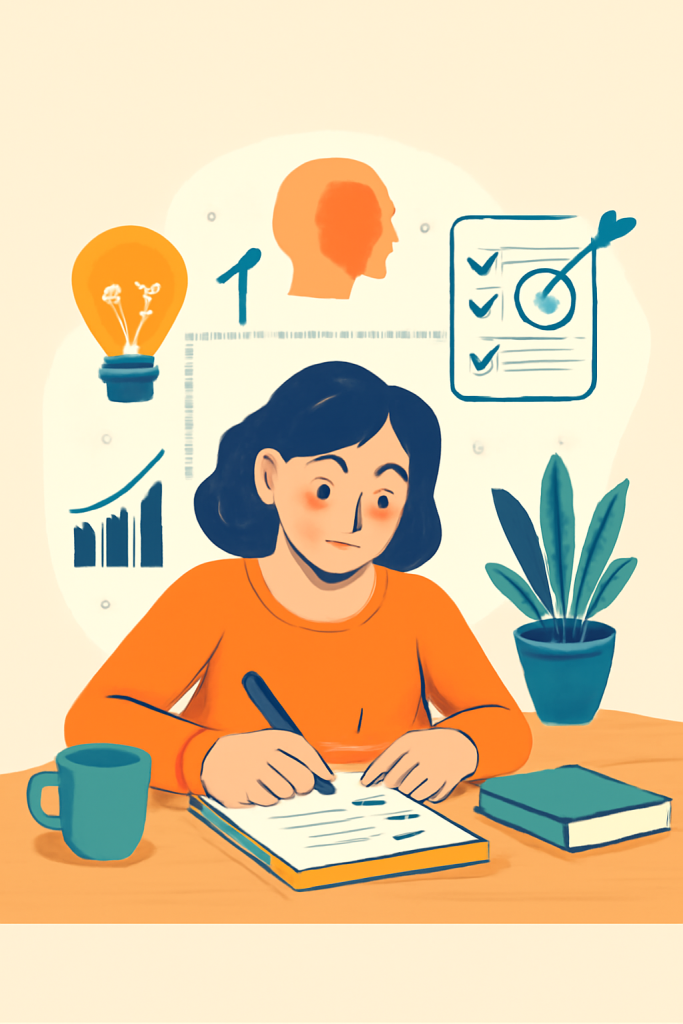Personal development has become a cornerstone for success and fulfillment in 2025. Whether you’re aiming to advance your career, improve your well-being, or learn new skills, a personal development plan (PDP) is your blueprint to growth. This comprehensive guide will take you through the essential steps to create a personal development plan that fits your unique goals and keeps you competitive in an ever-changing world.

What Is a Personal Development Plan and Why Does It Matter?
A personal development plan is a structured approach that helps you map out your goals, identify your strengths and weaknesses, and chart the path for personal and professional growth. It’s a dynamic document that evolves as you learn and progress.
Today, personal development plans are no longer optional; they are necessary tools for navigating the rapid transformations in technology, work culture, and even mental health awareness. The pandemic accelerated the focus on resilience and continuous learning, and these themes have only intensified in 2025.
Having a clear personal development plan allows you to take control of your future, improve your confidence, and meet the increasing demands of the job market and personal life challenges (Smith 2023).
Step 1: Conduct a Deep Self-Assessment
The first step to crafting a meaningful personal development plan is to thoroughly understand where you currently stand. Self-assessment helps reveal your skills, habits, values, and areas needing improvement.
Tools and Techniques for Self-Assessment:
- SWOT Analysis: Identify your Strengths, Weaknesses, Opportunities, and Threats. For instance, you might be great at communication (strength) but struggle with time management (weakness).
- Feedback: Collect input from trusted colleagues, mentors, or friends who can offer honest perspectives.
- Personality and Skills Tests: Use assessments like the Myers-Briggs Type Indicator, StrengthsFinder, or DISC to gain insights into your working style and talents.
This reflection ensures your plan is grounded in reality and tailored to your authentic self rather than assumptions.
Step 2: Set SMART Goals for Clear Direction
Once you know where you are, decide where you want to go. Setting SMART goals — Specific, Measurable, Achievable, Relevant, and Time-bound — makes your personal development plan actionable and motivating.
How to Set Effective SMART Goals:
- Specific: Define exactly what you want to achieve. Instead of “improve communication,” set “deliver a presentation to the team by July.”
- Measurable: Quantify your goal to track progress, e.g., “complete three online courses in digital marketing by Q3.”
- Achievable: Set realistic goals within your current resources and commitments.
- Relevant: Align goals with your broader life and career aspirations.
- Time-bound: Assign deadlines to avoid procrastination.
Research shows people with clearly articulated goals are 42% more likely to reach them, proving the power of goal-setting in personal growth (Johnson 2024).
Step 3: Identify Resources and Learning Opportunities
In 2025, the explosion of digital learning platforms and microlearning has transformed how we develop skills. A personal development plan is only effective when paired with the right resources.
Where to Find Learning Opportunities:
- Online Courses: Platforms like Coursera, Udemy, and LinkedIn Learning offer flexible courses in almost every field.
- Workshops and Webinars: These can provide hands-on experience and direct interaction with experts.
- Networking and Mentoring: Joining professional groups or finding a mentor can accelerate your learning and open doors.
- Books, Podcasts, and Articles: Supplement formal learning with accessible knowledge from industry leaders and thought experts.
Utilizing diverse resources keeps your learning dynamic and helps you adapt to evolving career demands.
Step 4: Develop a Detailed Action Plan with Deadlines
A plan without execution is just a wish. Organize your goals into concrete actions, timelines, and milestones.
Tips for Creating an Effective Action Plan:
- Break down each goal into smaller, manageable tasks.
- Allocate specific times weekly for development activities.
- Use productivity tools such as Trello, Notion, or Google Calendar to schedule and monitor tasks.
- Set reminders and deadlines to hold yourself accountable.
For example, if your goal is to improve public speaking, your tasks might include “join a local Toastmasters club by June” and “practice weekly speeches.”
Step 5: Monitor Your Progress and Be Ready to Adapt
Continuous review is essential for personal development. The most successful plans are flexible, allowing you to adjust based on what you learn about yourself and the world.
How to Track Progress:
- Set monthly or quarterly review sessions to evaluate achievements and challenges.
- Keep a journal or digital log of accomplishments and setbacks.
- Seek feedback periodically to ensure your growth is aligned with your goals.
- Be ready to pivot your goals or methods as circumstances change.
Adaptability is one of the most valued skills in 2025, especially with technology and workplace dynamics shifting rapidly (Lee 2023).
Additional Tips for Building a Future-Proof Personal Development Plan
1. Integrate Wellness Goals
Mental and physical health directly impact your ability to grow. Include activities like meditation, exercise, and adequate rest as part of your plan to boost productivity and resilience.
2. Use AI and Technology to Your Advantage
Leverage AI-driven learning apps and personalized coaching platforms that offer tailored suggestions based on your progress and preferences.
3. Find Accountability Partners
Sharing your goals with peers or mentors creates a support system that enhances motivation and commitment.
4. Focus on Soft Skills Alongside Technical Skills
Empathy, communication, and problem-solving are as critical as hard skills. Prioritize these in your development plan to stand out in today’s workplace.
Why 2025 Is the Year to Prioritize Your Personal Development Plan
With ongoing automation, AI, and the gig economy reshaping how we work, static skills no longer guarantee security or success. Personal development plans empower you to remain relevant by constantly upgrading your capabilities and adapting to new roles and challenges.
Furthermore, employers increasingly value individuals who demonstrate self-awareness and proactive growth, making a well-executed PDP a significant career asset.
Conclusion: Start Building Your Personal Development Plan Today
Creating a personal development plan requires commitment and honesty but offers immense rewards in personal growth and career success. Follow these steps—self-assessment, goal-setting, resource identification, action planning, and progress review—to craft a plan tailored to your unique needs and aspirations.
In 2025, a personal development plan is not just a tool—it’s your competitive advantage in an evolving world. Start your journey now and stay ahead.
References
- Smith, A. (2023). The Future of Work and Lifelong Learning. Harvard Business Review. Available at: https://hbr.org/2023/01/future-of-work-lifelong-learning (Accessed: 28 May 2025).
- Johnson, L. (2024). ‘Goal Setting and Achievement: The Psychology Behind Success’, Journal of Applied Psychology, 109(2), pp. 150-163. DOI: 10.1037/apl0000456.
- Lee, M. (2023). ‘Adaptability as a Key Skill in Modern Careers’, Forbes. Available at: https://forbes.com/adaptability-modern-careers (Accessed: 28 May 2025).






